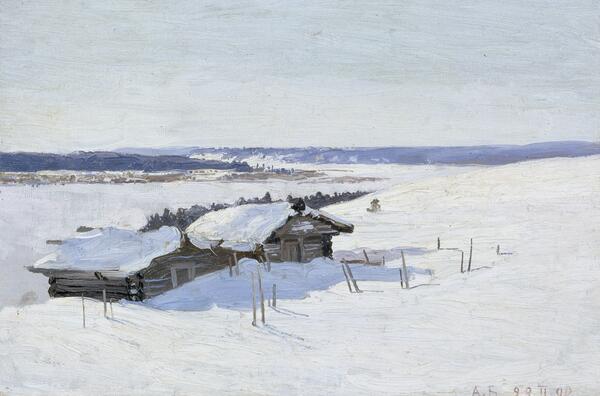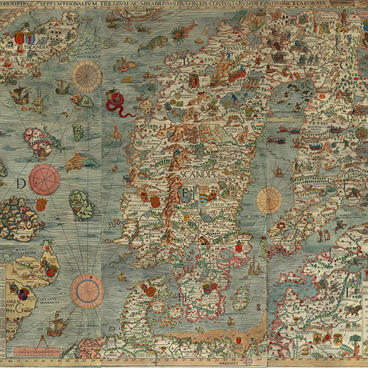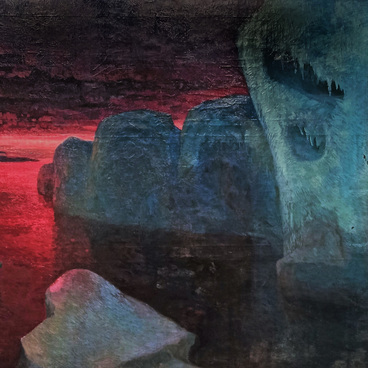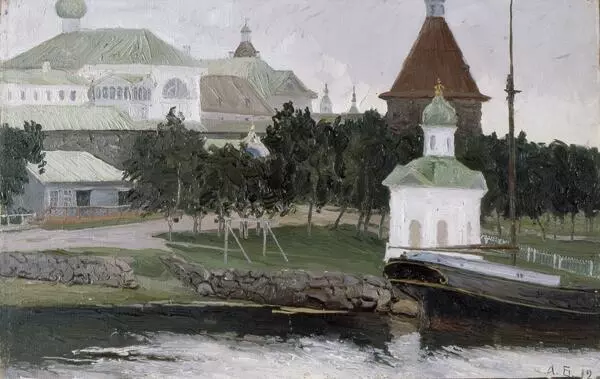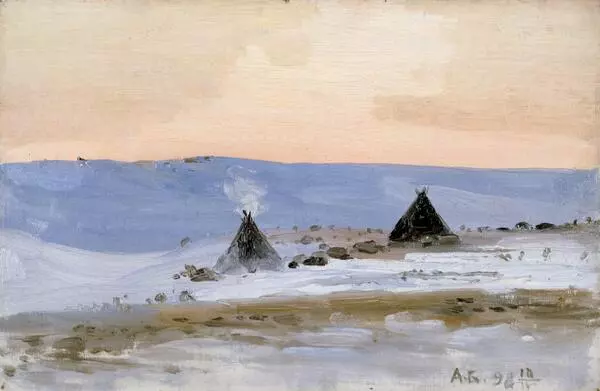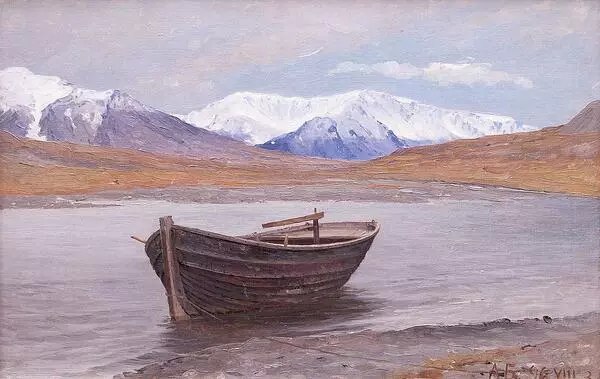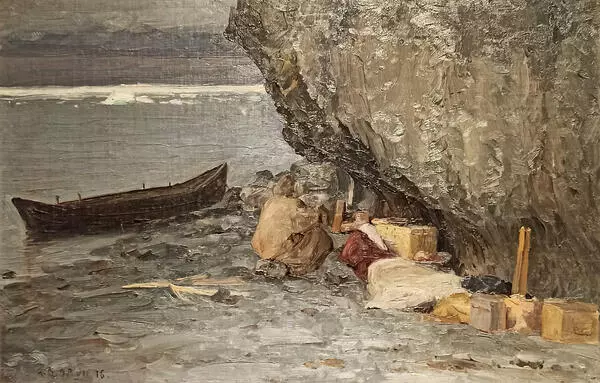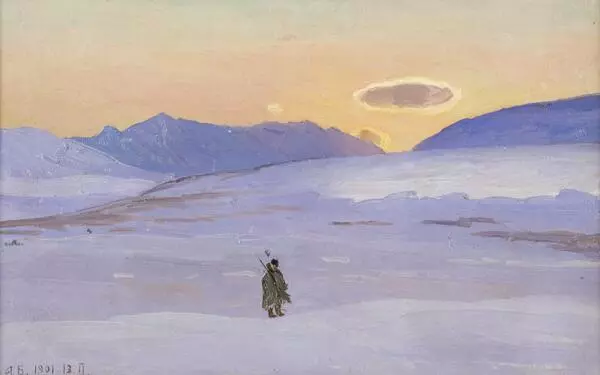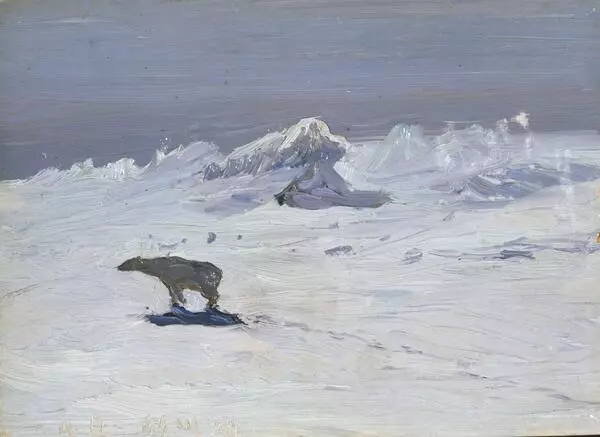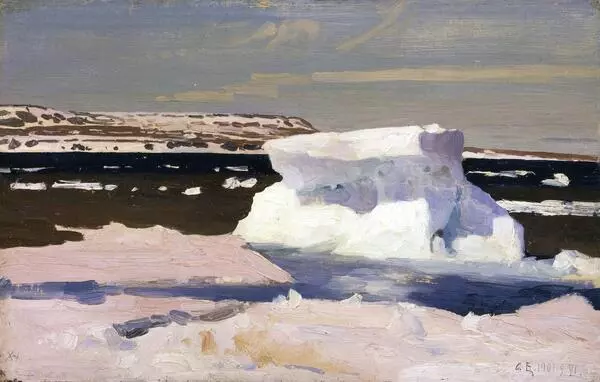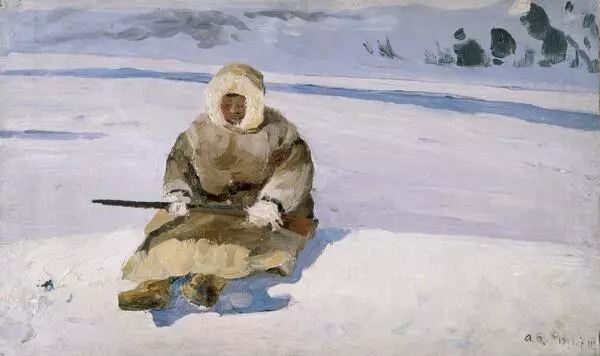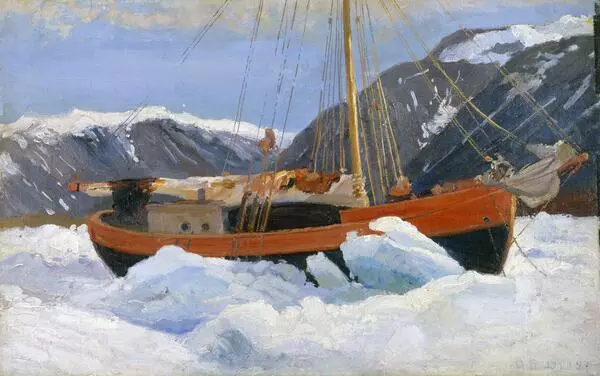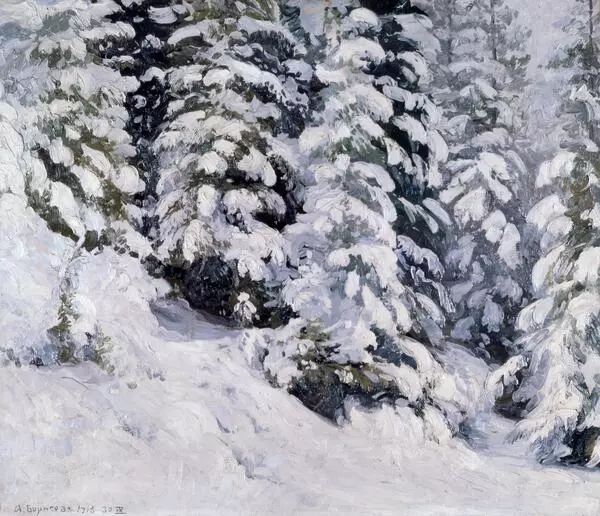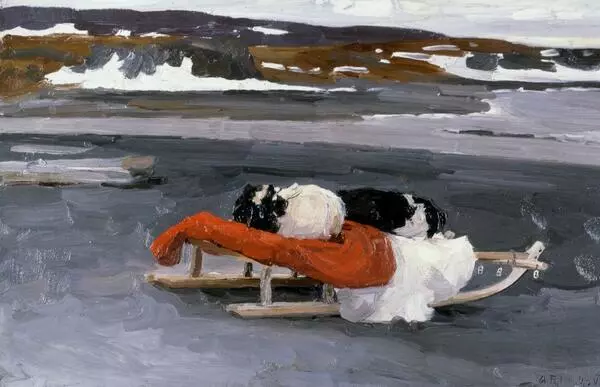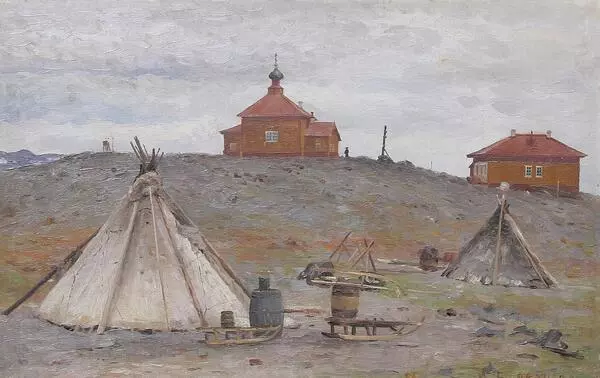Alexander Borisov was deeply impressed by the cold, snowy Northern winter, a feeling reflected in a number of his works. In the beginning of 1898 he painted the Study of Huts.
The picture shows the vast expanse of the frozen Mezen river, a low hill chain bounding the valley on the horizon. Two log huts huddled together darken against the snow-covered plane. Large snow banks surround the walls, the roofs are concealed under a fluffy snow blanket. The many pegs plugged in front of the huts throw clear shadows on the bluish snow under the slanting sun. Alexander Borisov learned how to treat light from Arkhip Kuindzhi, a famous Russian painter. Although the picture shows a tranquil winter day, some other works by Borisov demonstrate his ability to masterfully depict setting and rising sun, as well as convey various colour tones and hues of white, the main colour in the northern winter palette. The artist uses just a few colours, but employs them with great precision.
Apparently, the huts mark an old land route. Those routes were one of the main transport options in the Russian North. At first, the land routes were used for postal transportation, but later they were adapted for merchant and civil purposes. All the routes were maintained at the expense of natural taxes. Taxation was based on the population of each county. There were stations and inns along each land route, where travellers could take a rest and change their horses. The stations were operated by station masters popularly called kushniks.
A thick row of trees edges the road. Nobody knows what is hidden in the woods. The monotonous grind of sled-runners is the only sound disturbing the silence. The artist skillfully alternates light and dark patches, giving the picture a joyful vividness, with a crisp ultramarine shadow close to the centre of the canvas. The saturated tones of blue and brown against the mantle of the snow result in a harmonious interplay that makes this painting sincere, graceful and exceptionally beautiful.
The picture shows the vast expanse of the frozen Mezen river, a low hill chain bounding the valley on the horizon. Two log huts huddled together darken against the snow-covered plane. Large snow banks surround the walls, the roofs are concealed under a fluffy snow blanket. The many pegs plugged in front of the huts throw clear shadows on the bluish snow under the slanting sun. Alexander Borisov learned how to treat light from Arkhip Kuindzhi, a famous Russian painter. Although the picture shows a tranquil winter day, some other works by Borisov demonstrate his ability to masterfully depict setting and rising sun, as well as convey various colour tones and hues of white, the main colour in the northern winter palette. The artist uses just a few colours, but employs them with great precision.
Apparently, the huts mark an old land route. Those routes were one of the main transport options in the Russian North. At first, the land routes were used for postal transportation, but later they were adapted for merchant and civil purposes. All the routes were maintained at the expense of natural taxes. Taxation was based on the population of each county. There were stations and inns along each land route, where travellers could take a rest and change their horses. The stations were operated by station masters popularly called kushniks.
A thick row of trees edges the road. Nobody knows what is hidden in the woods. The monotonous grind of sled-runners is the only sound disturbing the silence. The artist skillfully alternates light and dark patches, giving the picture a joyful vividness, with a crisp ultramarine shadow close to the centre of the canvas. The saturated tones of blue and brown against the mantle of the snow result in a harmonious interplay that makes this painting sincere, graceful and exceptionally beautiful.

